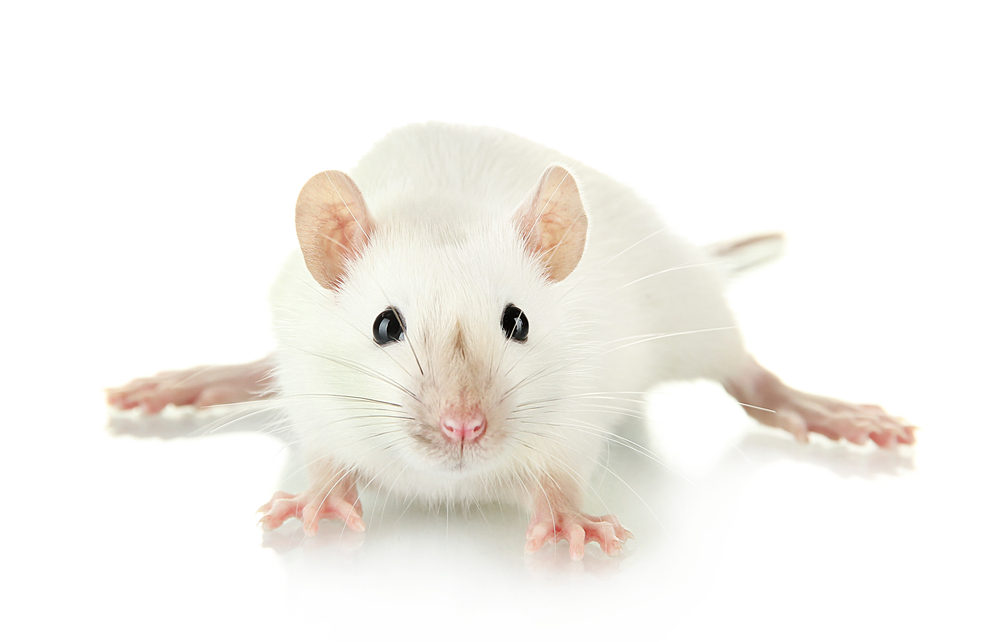Gene Therapy, Now in GD1 Trial, Shows Efficacy in Mice at Varying Disease Stages

An investigational gene therapy aiming to restore GBA gene function — which is defective in people with Gaucher disease — showed efficacy both before and after symptom development in a mouse model of the disorder, a study reported.
These findings supported the ongoing GuardOne Phase1/2 clinical trial, which is evaluating the potential gene therapy AVR-RD-02 as a treatment of type 1 Gaucher disease (GD1).
The study, “Correction of pathology in mice displaying Gaucher disease type 1 by a clinically-applicable lentiviral vector,” was published in the journal Molecular Therapy Methods & Clinical Development.
AVR-RD-02, developed by Avrobio, which also sponsors the GuardOne trial (NCT04145037), uses a harmless lentiviral vector to carry a functional copy of the GBA gene.
The treatment begins when blood cell precursors known as hematopoietic stem cells are removed from a patient’s body, modified with the healthy GBA gene via the lentivirus vector, and then reintroduced to the patient to restore proper function. A working gene copy produces the beta-glucocerebrosidase enzyme, which breaks down a fatty molecule known as glucocerebroside that accumulates mostly in the spleen, liver, and bone marrow of individuals Gaucher.
Before testing in people, the therapy was first developed and assessed in animal models to provide the necessary proof-of-concept preclinical evidence.
Here, an international team in collaboration with scientists at Avrobio described the development and evaluation of AVR-RD-02 in a mouse model of Gaucher that reproduces classic features of GD1 — the disease’s most common form — such as increased spleen and liver size. These mice typically do not show symptoms before five months of age because of the time required for glucocerebrosides to reach toxic levels.
Initial experiments confirmed the integration of the GBA gene into hematopoietic stem cells isolated from animals’ bone marrow.
To simulate the experience of pre-symptomatic patients following an early diagnosis (early intervention), stem cells were isolated from young GD1 mice between almost three to four months of age. Cells were administered with the lentivirus carrying the GBA gene, then transplanted back into the same mice.
After 20 weeks, treated mice had up to 86% lower glucocerebrosides across all tissues compared with those with mock-treated cells. No enlargement of the liver and spleen was evident in treated animals.
Further experiments showed that treated mice had reduced infiltration of Gaucher cells — macrophages with accumulated glucocerebroside — into the bone marrow, spleen, liver, and thymus. Treatment also preserved the organ structure of the spleen and thymus.
An examination of bones, which are also affected in people with Gaucher, found that treated male animals had more bone mass and density than did untreated controls. No such difference was seen in female mice.
Next, to simulate patients whose disease has progressed without conventional treatment (late intervention), cells were isolated from GD1 mice between six and nine months of age whose symptoms were established.
Treated mice showed a decrease of up to 83% in glucocerebroside and 88% in glucosylsphingosine (another biomarker of Gaucher) across all tissues. Although there was considerable variation in liver enlargement at this stage of the disease among the animals, all treated mice exhibited a significant reduction in spleen and liver mass compared with controls.
Again, the team found a prominent decrease of infiltrating Gaucher cells into the bone marrow, spleen, liver, and thymus of mice given the gene therapy compared with controls.
In the late intervention group, both male and female mice showed increases in bone mass and density after treatment.
“In summary, we conclude that the [GBA lentiviral] vector is efficacious in reducing substrate levels and preventing (as well as reversing) pathophysiological [disease-related] signs that arise in the Gaucher disease type 1 animal model,” the investigators wrote.
“We propose this vector be used in an investigational clinical study for treating Gaucher disease type 1,” they added.



